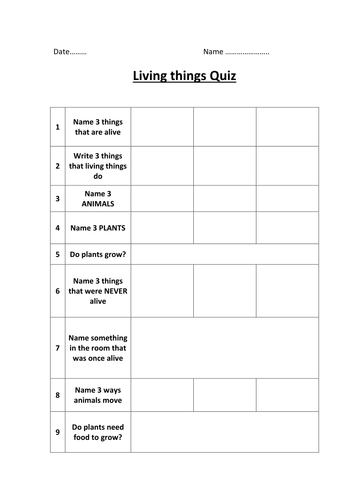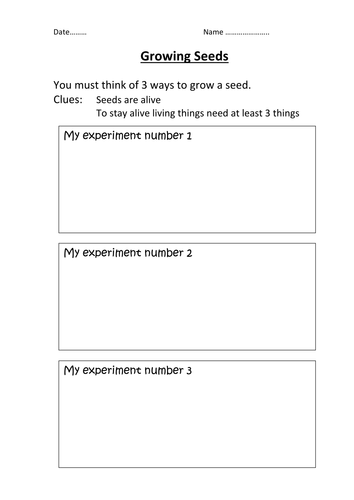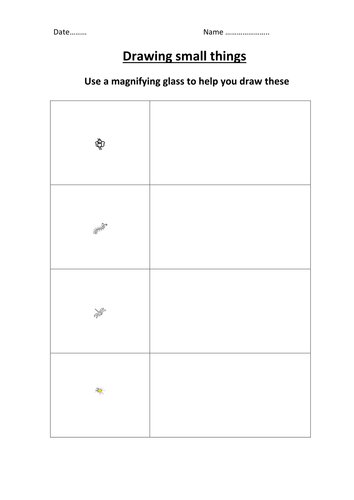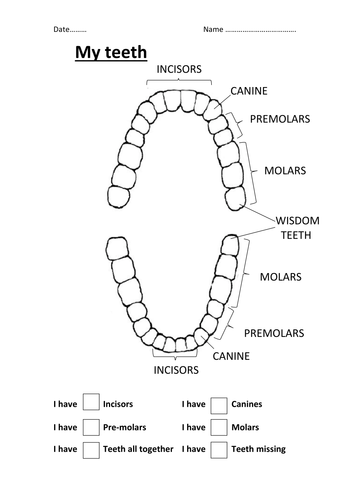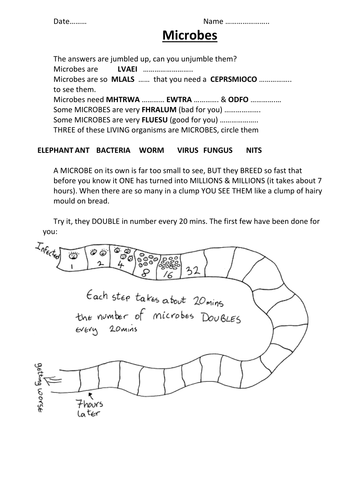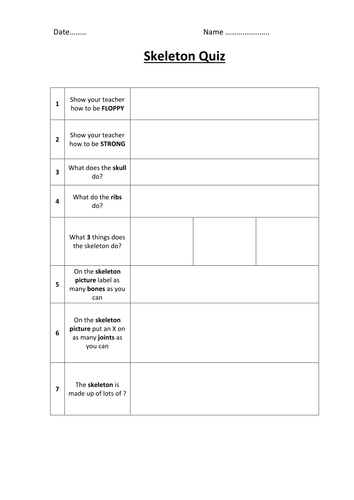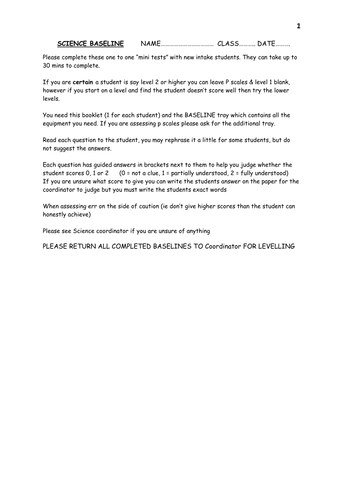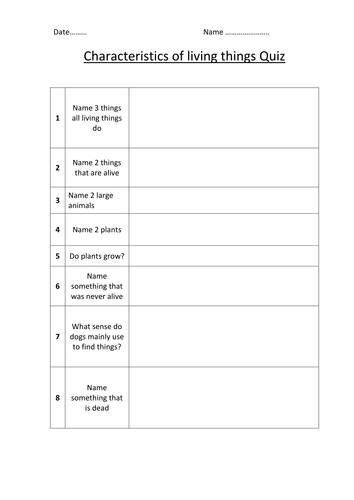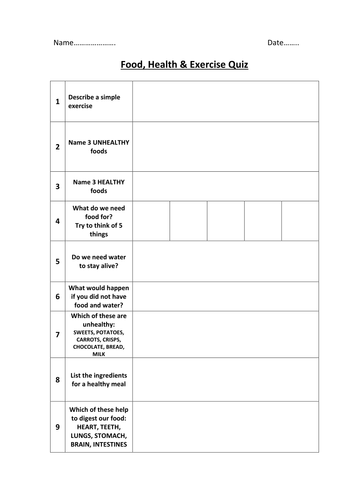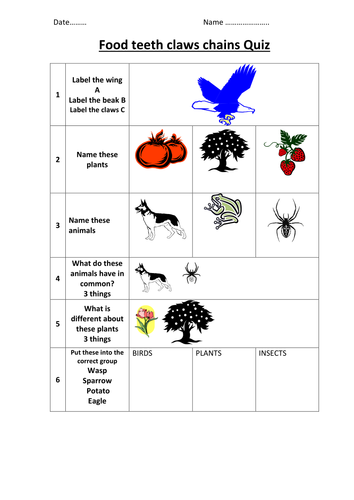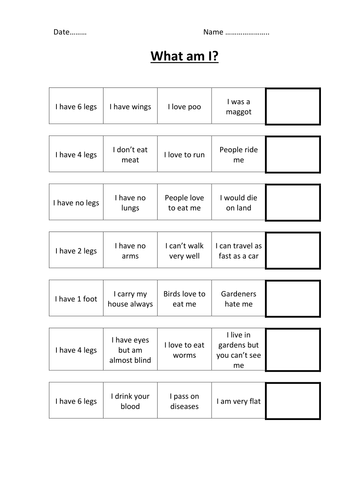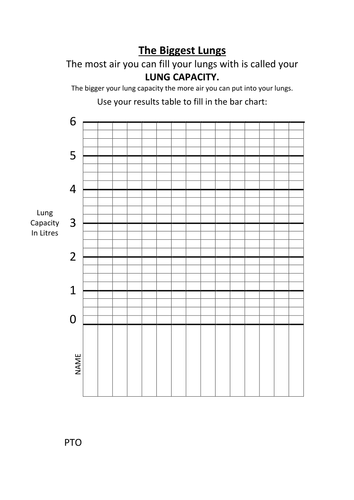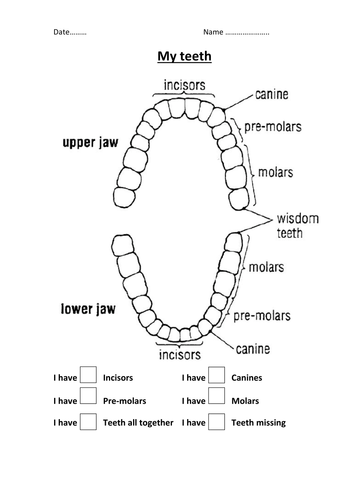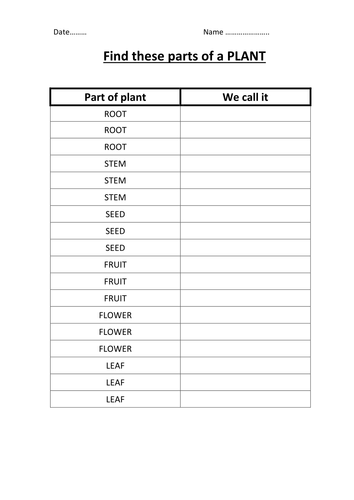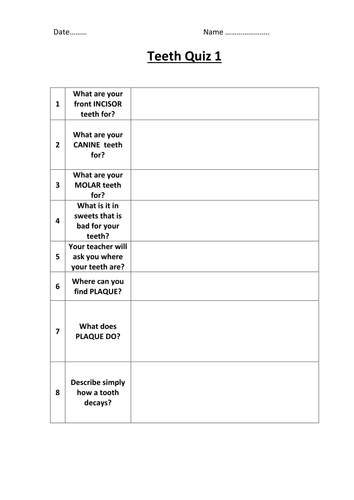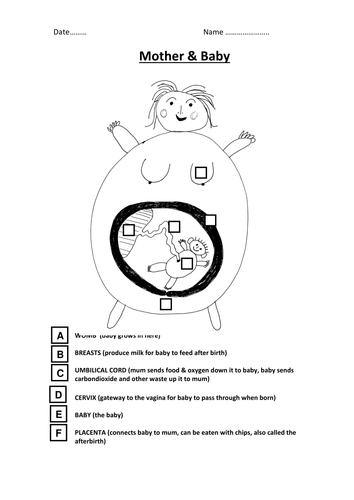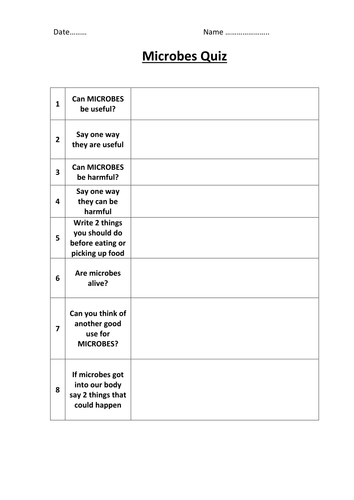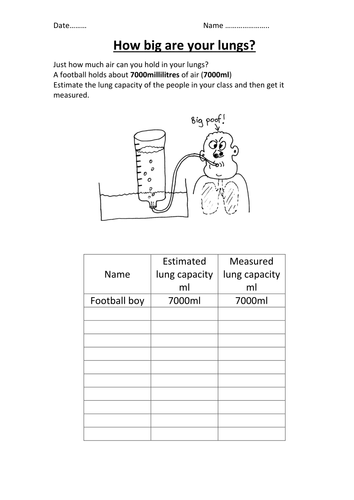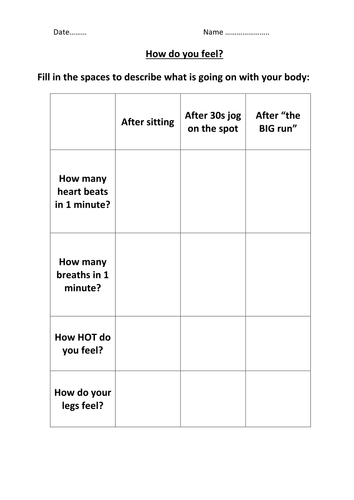
69Uploads
16k+Views
514Downloads
Biology

Living things quiz
Short simple quiz that allows you to judge the understanding and level of your students

Using a microscope
Worksheet that enables students to draw what they see under the microscope, suggested samples are on the sheet but of course you can add your own or even leave some blank for students to suggest.
I have had students hunting for insects, leaves are popular, worms, ants are tricky but petri dishes are helpful, dust, finger nail dirt, etc etc
Students love to enter the world of the microscopic..be prepared to allow a couple or 3 lessons to let their imagination soar.

Growing seeds
I love these activities...you must be prepared for all sorts of ideas from the students...but more importantly allow them to try it out..PLEASE DO NOT tell them "this won't work because" and then give them all the answers that are required by law and the curriculum....let them excercise their own problem solving skills and love you for letting them try it out..in a controlled way of course.
Basically they need to find out/ try out/ explore what conditions seeds need to germinate successfully
I have had students burn some seeds with a bunsen as they had seen plants growing after a forest fire..indeed you can discuss thet some seeds need extreme heat before they germinate.
Other ideas students have had:
put in freezer overnight, soak in water, hit with rock, put in acid, keep in dark, keep in light, and so it goes on

Drawing small things
Students use hand lenses, magnifiers, whatever you have available....this can lead to a "not fair" discussion as some students only have low magnification.
The worksheet contains pictures of very small living things with varrying amounts of legs, antenae, wings, spots, colours...students must use the magnifier to draw as carefully as they can the pictures.
The students can then mark their own efforts after you tell them what detail you expected and they should have spotted..be prepared for lots of moaning and a bit of banter.

My Teeth
A simple activity which could last a few lessons..depending on what you/the students find.
Possible extra apparatus you could use: mirrors, cotton wool buds to help counting (don't use cocktail sticks unless you have a few hors spare to fill in the incident forms).
The clear picture on the worksheet shows students which teeth are which and all they have to do is count their own and record the numbers. They can try on their own in pairs, use their tongue to keep track or cotton wool buds to "tap" the teeth as they count.
A mirror is very useful.
The activity usyually lends itself to much discussion regarding missing teeth, extra teeth, decay, bad breath, bacteria, diet etc.
I like it because you can just watch the students find out about "themselves" remind them it is not a competition, unless you want it to be.

Microbes
Straight forward worksheet that can be used to introduce the world of microbes, especially the fact that they multipky so quickly and can cause proiblems for us, as well as benefits for us quickly

Skeleton quiz
Short simple quiz that allows you to judge the understanding and level of your students

SCIENCE BASELINE assessment from level P4 to 4a (old NC levels)
I have used this assessment with students over the years and modified/improved as time went on.
I believe it to be a good way of assessing students when they are new to the school or even at the end of each year or indeed at any time you wish.
It is based around 4 small assessments for Biology, Chemistry & Physics, so a total of 12 mini-assessments.
Ideally the teacher or assistant spends up to 30 mins (can split the assessment over a few days if you wish but best results have been when the entire assessment is completed at one time) in a ONE TO ONE session.
The teacher/assistant reads the script (this is important as it reduces leading questions and clues to answers), the responses are noted down but in most cases a tick will indicate if the student has understood fully, partially understood or not understood at all.
Minimal resources are needed and are kept in a tray for use at any time. I believe doing or demonstrating science is a beautiful way to engage students, so the assesment uses this.
You will need to source basics like balloons, toy car, rocks etc.
I chose to set up 4 trays so 4 assessments could be completed at the same time (perhaps different classes)
The levels assessed are from P4 up to 4a old levels (which I believe are still useful) you may wish to change the names of the levels to suit your own school.
The script states which resources to use in each question as well as appropriate answers that should be expected for fully, partially and not at all levels of understanding. This allows staff that are not science trained to be able to complete these assessments with the students with relative ease.
Good luck

Characteristics of living things
Short simple quiz that allows you to judge the understanding and level of your students

Food, Health and Excercise quiz
Short simple quiz that allows you to judge the understanding and level of your students

Food chains, teeth and claws
Short simple quiz that allows you to judge the understanding and level of your students

What am I quiz sheet
Very simple worksheet to get students thinking and visualising living things
With blank table on the back for students to make up there own

The biggest lungs
This is the bar chart that students end up with after having completed the excercise and lung capacity activity.
It can lead nicely on from the "balloon" bar chart (if you chose to use it) for younger/less able students...or even more able but a "twist" on bar charts (see how big are your lungs)

My Teeth
A nice graphic worksheet which allows students to use a mirror next to the worksheet and "tick off" colour in or even mark in missing teeth or fillings.
At the same time finding out what they should have and practice the terminology.
Has been used as a before the dentist and after the dentist visit....if the students are up for it

Familiar plants
Very simple worksheet designed to make students realize that scientific names of parts of plants...roots, stem, flower, fruit have common names that they already know...carrot, leek, fruit
I have provided a shopping bag of fruit & veg to display and just let the students explore and realize, of course a set of photos works just as well but you can't eat them afterwards

Babies
A basic worksheet with my drawing of a baby inside the womb. Works well with most students and promotes discussion

Microbes quiz
Short simple quiz that allows you to judge the understanding and level of your students

How big are your lungs
A measuring lung capacity activity, staff lead.
You will need a large plastic bottle, I used a 5litre (windsreen wash topup bottle-empty and washed, and for smaller children a 2 litre coke bottle), mark the volumes with permanent pen on the outside of the bottle (add 100ml of water at a time to see where the marks should go. Have a steriliser solution in a beaker(baby bottle tablet types are great, as well as a rinse beaker to clean the mouth part of the pipe each time.
In one big breath students blow into the upturned bottle and their lung volume is recorded.
For younger students you can give each student an identical balloon (care with latex allergies) and get them to blow in one breath, tie up and stick "same size" balloons on board like a bar graph but made from balloons. Different colours look great. Visualy you see a bar graph on the wall made from balloons with the most common lung capacity having the tallest column of balloons.....then you can work on "real" bar charts

How do you feel after excercise?
Getting students to think about any changes to their body due to excercise.
This involves 3 levels of excercise (more if you wish) after which the students need to measure/monitor changes in their body.
This leads onto the 2 more activies/worksheets about lung capacity

